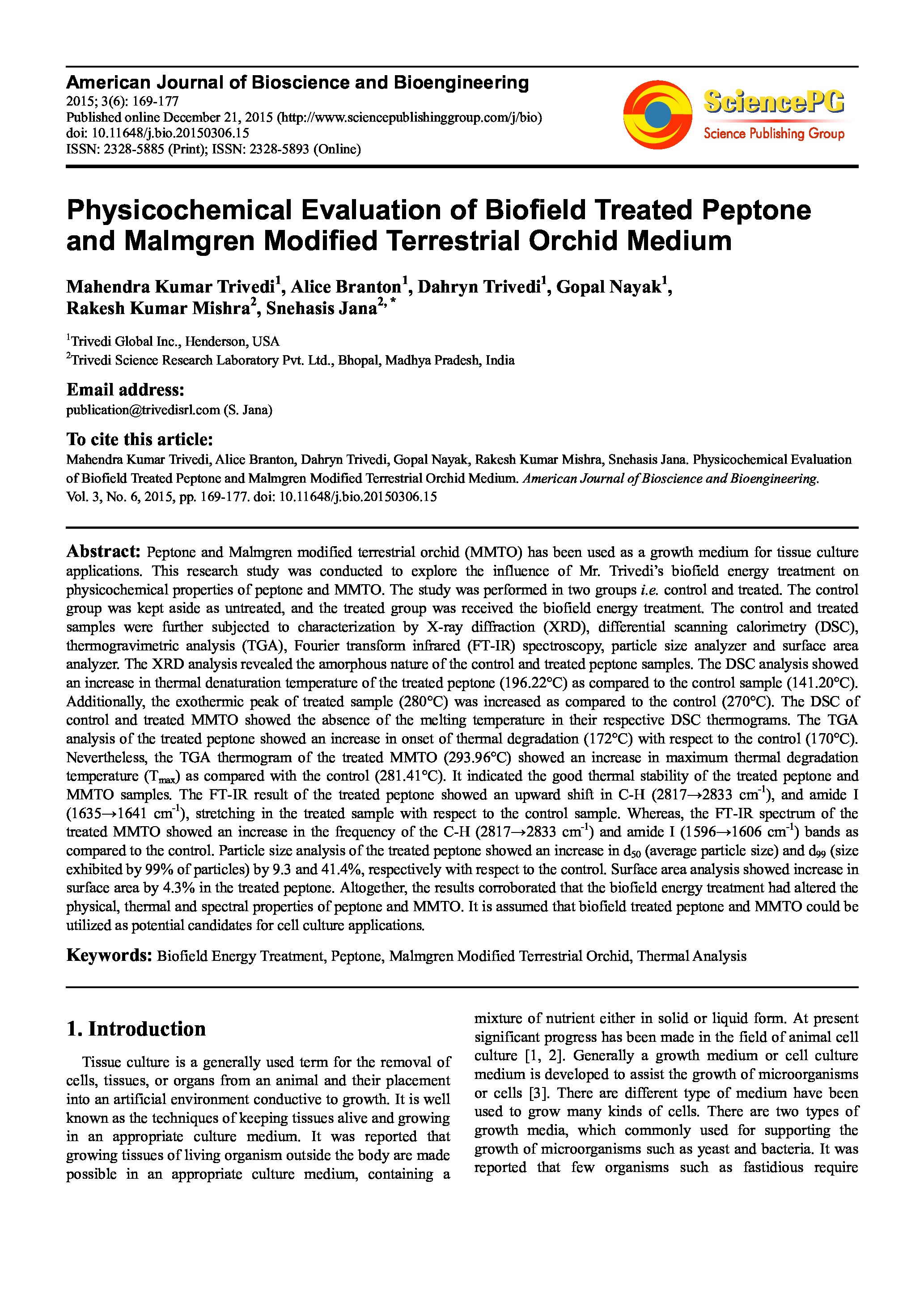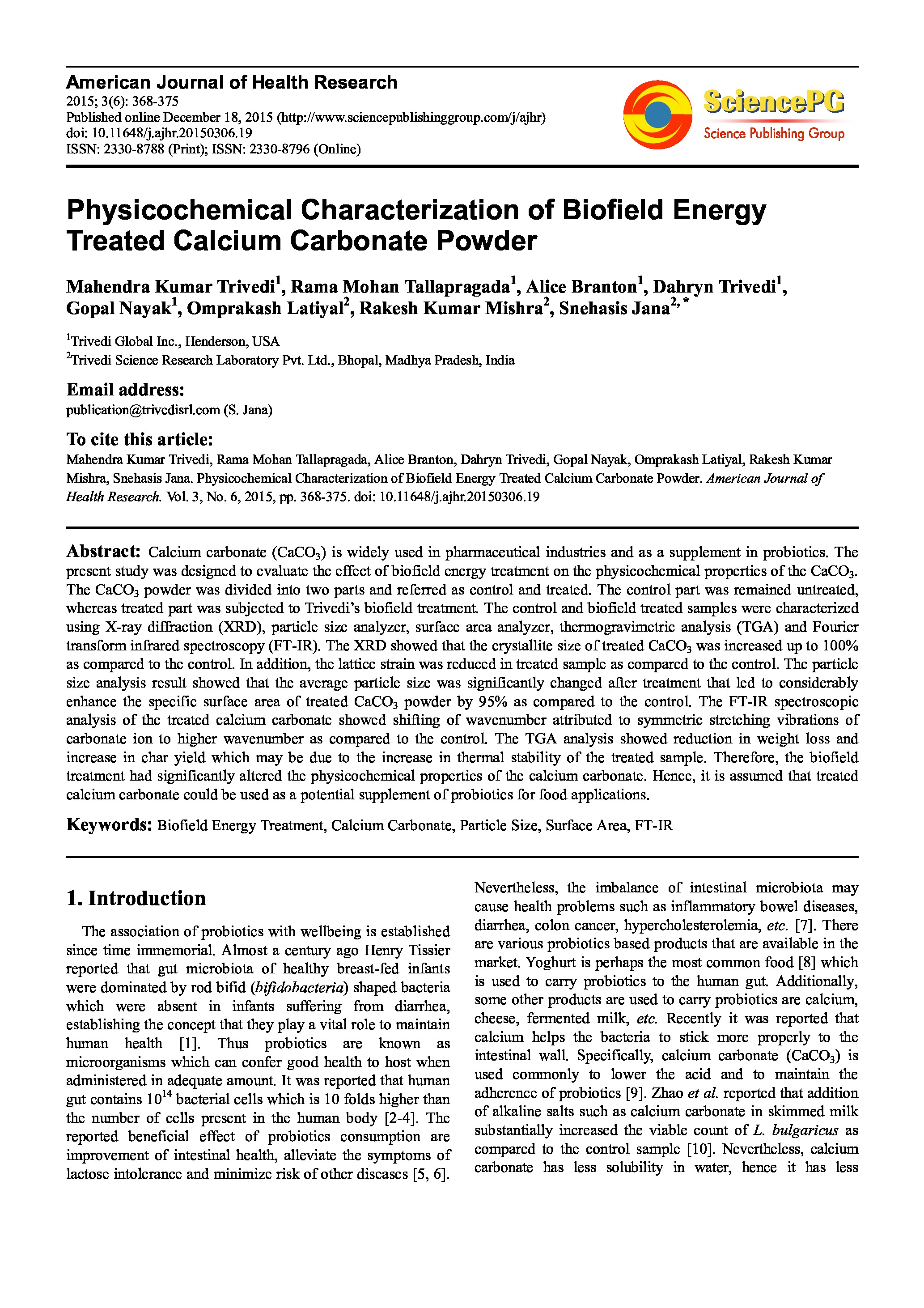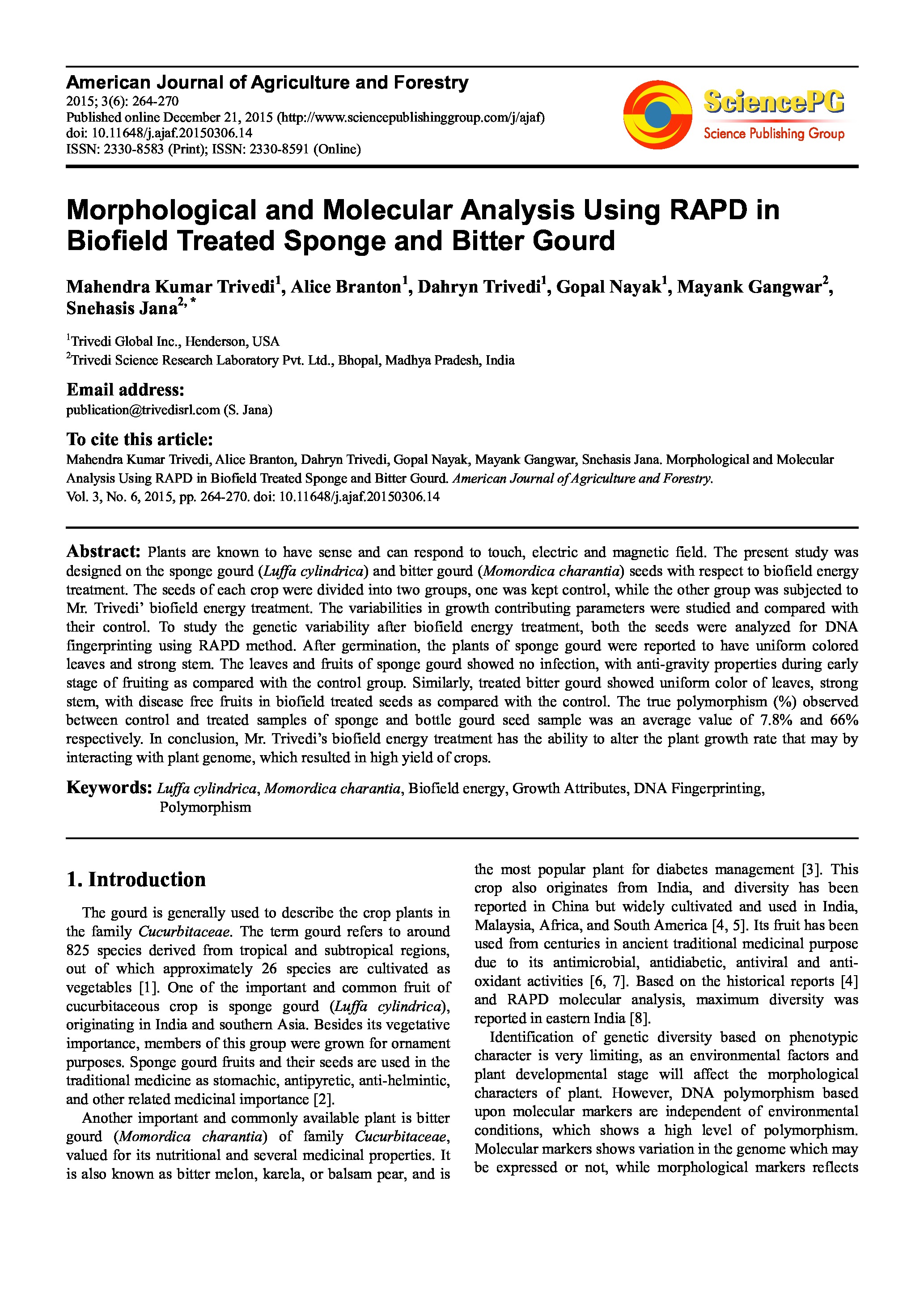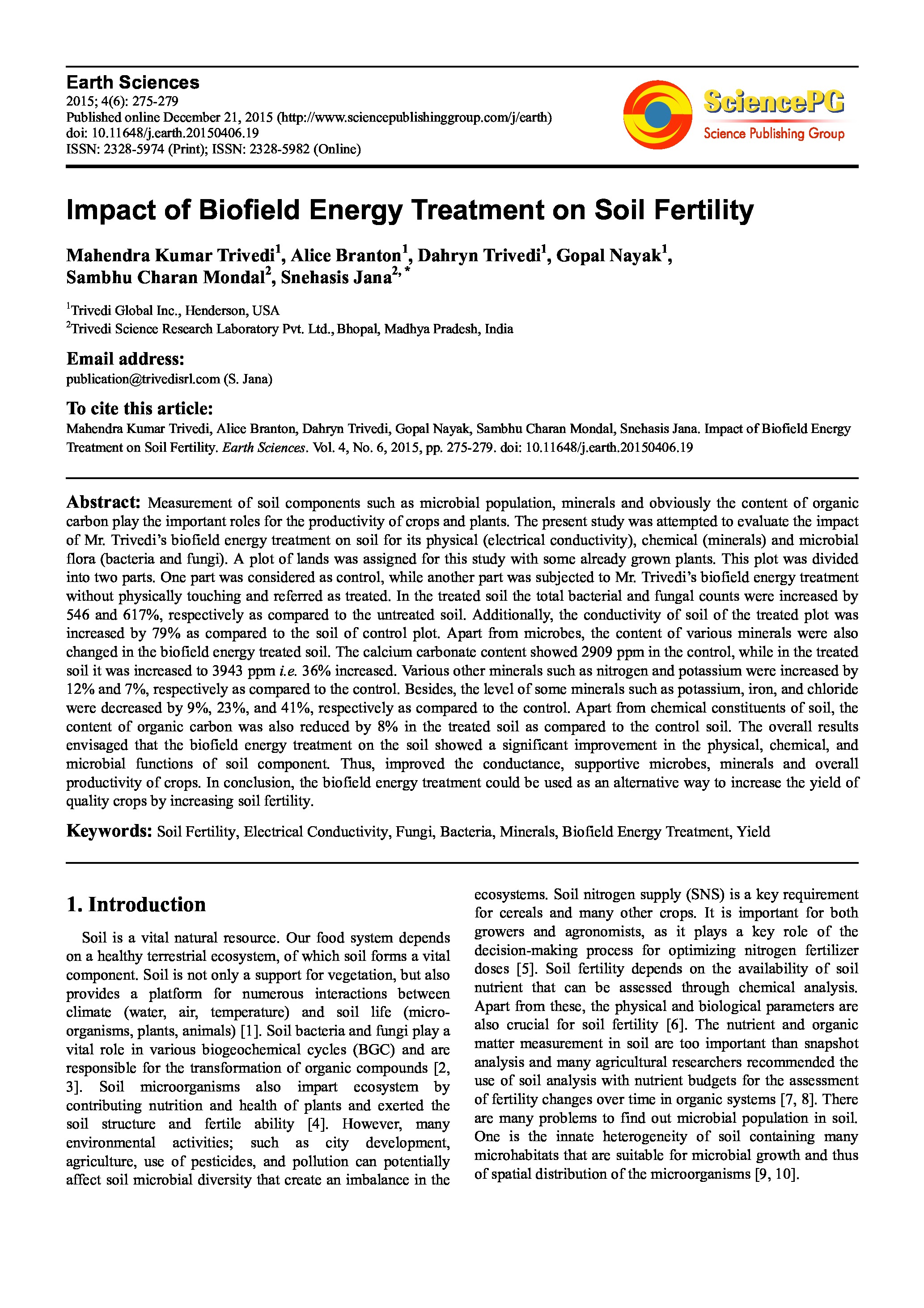Date of upload:
19.12.2016
Co-author:
Mahendra Kumar Trivedi, Alice Branton, Dahryn Trivedi, Sambhu Charan Mondal, Snehasis Jana
Abstract:
Measurement of soil components such as microbial population, minerals and obviously the content of organic carbon play the important roles for the productivity of crops and plants. The present study was attempted to evaluate the impact of Mr. Trivedi’s biofield energy treatment on soil for its physical (electrical conductivity), chemical (minerals) and microbial flora (bacteria and fungi). A plot of lands was assigned for this study with some already grown plants. This plot was divided into two parts. One part was considered as control, while another part was subjected to Mr. Trivedi’s biofield energy treatment without physically touching and referred as treated. In the treated soil the total bacterial and fungal counts were increased by 546 and 617%, respectively as compared to the untreated soil. Additionally, the conductivity of soil of the treated plot was increased by 79% as compared to the soil of control plot. Apart from microbes, the content of various minerals were also changed in the biofield energy treated soil. The calcium carbonate content showed 2909 ppm in the control, while in the treated soil it was increased to 3943 ppm i.e. 36% increased. Various other minerals such as nitrogen and potassium were increased by 12% and 7%, respectively as compared to the control. Besides, the level of some minerals such as potassium, iron, and chloride were decreased by 9%, 23%, and 41%, respectively as compared to the control. Apart from chemical constituents of soil, the content of organic carbon was also reduced by 8% in the treated soil as compared to the control soil. The overall results envisaged that the biofield energy treatment on the soil showed a significant improvement in the physical, chemical, and microbial functions of soil component. Thus, improved the conductance, supportive microbes, minerals and overall productivity of crops. In conclusion, the biofield energy treatment could be used as an alternative way to increase the yield of quality crops by increasing soil fertility.




